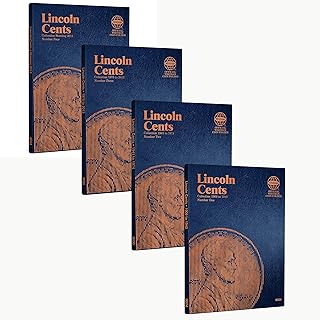Welcome to the intricate world of coin collecting—a hobby that marries history, artistry, and economics in one fascinating pursuit. As an experienced coin collector and dealer, I know that a strong grasp of numismatic vocabulary is key to fully engaging with this pastime. Whether you’re a novice numismatist or someone with years of experience, this glossary can act as a handy reference or a learning guide to the myriad terms used in coin valuation and collecting.
Welcome to the intricate world of coin collecting—a hobby that marries history, artistry, and economics in one fascinating pursuit. As an experienced coin collector and dealer, I know that a strong grasp of numismatic vocabulary is key to fully engaging with this pastime. Whether you’re a novice numismatist or someone with years of experience, this glossary can act as a handy reference or a learning guide to the myriad terms used in coin valuation and collecting.
Understanding Coin Composition and Minting Techniques
Alloy - Coins are often not made of pure metal; instead, they are produced from an alloy, which is a blend of metals. This combination is chosen to endow coins with specific properties like increased resilience or a unique hue.
Annealing - Before a coin is struck, the metal discs, known as blanks, are often heated to render them more pliable. This heat treatment is known as annealing, and it plays a crucial role in the minting process.
The Coin Lifecycle: From Creation to Collection
Archiving - Preserving coins for historical and reference purposes falls under archiving—a practice that helps maintain the lineage and stories of different coinages.
Assay - For collectors who value precision, an assay is an important analysis that determines the exact composition or purity of a coin's metal.
Bag Mark - As coins jostle about in transit or storage, they can acquire marks or nicks—commonly referred to as bag marks—that may or may not affect their overall value.
Special Coin Types and Their Collectibility
Bi-Metallic - Modern minting sometimes involves creating coins from two different metals, leading to eye-catching bi-metallic coins that often become collector favorites.
Bullion - Signifying wealth and investment, bullion coins are those minted from precious metals like gold or silver, their value closely tied to the metals market.
Business Strike - These workhorse coins are the ones found in everyday transactions. They differ from proofs or special collectors’ editions in terms of their finish and production focus.
Circulating Coin - The mainstay of everyday commerce, circulating coins are what you find in your wallet and use at shops, characterized by their wide distribution and usability.
Key Collecting Concepts and Numismatic Nomenclature
Condition - A coin's condition can greatly affect its value, with gradations ranging from poor to mint state.
Currency - This catch-all term refers to the legal monetary concoctions—both coins and paper money—used to transact business.
Denomination - Reflective of a coin's face value, a denomination could span from a humble penny to a hefty dollar.
Designer and Engraver - The visual appeal of a coin is largely due to its designer and engraver. While the designer conceives the image, the engraver sculpts it into reality.
Anatomy of a Coin: Understanding the Physical Features
Edge and Rim - The periphery of a coin has its own vocabulary: the edge may be adorned with ridges or letters, while the rim gives the coin structure and shields the face designs from wear.
Field - Blank areas on a coin's surface, known as the field, serve as a backdrop to the raised design elements and inscriptions.
Hairlines - Fine, often unintended scratches that might occur through improper coin handling or cleaning are known as hairlines.
Inscription - Words on a coin—the inscription—provide details such as the issuing country, denomination, and perhaps even a transformative motto.
Coin Events and Errors: Unique Attractions in Numismatics
Error - Coins struck with deviations from the intended design, known as errors, can add an unexpected layer of rarity and interest for collectors.
Key Date - Some coins are elusive catches within a series, known as key dates, and are often the most pursued pieces in a collection.
Mintage - The number of coins produced in a particular series or year falls under mintage and can drive a coin's rarity and value.
Proof and Proof Set - Proofs are coins struck with special care for collectors, often featuring an exceptional finish. A proof set assembles each denomination from a given year in this highest quality.
Coin Preservation and Storage
Mint Luster - The sheen on uncirculated coins, known as mint luster, attests to their pristine state and careful handling.
Mint Set - A collection of uncirculated coins from a single mint for a specific year is called a mint set, offering a snapshot of that year's coinage.
Uncirculated - A coin that shows no signs of wear is deemed uncirculated and is often sought after for its pristine quality.
Expanding Your Numismatic Vocabulary
Restrike - Minting a coin anew using the original dies but at a subsequent time results in what collectors term a restrike.
Series and Type Set - Whether you’re collecting a full series that encompasses every minting variation of a specific design or a type set, representing different design and time-period variations, both approaches offer a structured path for your hobby.
Reverse and Obverse - The two faces of a coin—the front (obverse) and the back (reverse)—each bear their own significant designs.
Variety and Year Set - Minor design differences give rise to varieties, while a year set represents all the coins released by a mint in one year.
As we conclude this overview, remember that these terms merely scratch the surface of the diverse and detailed lexicon of numismatics. Stay tuned for further exploration into the captivating realm of coin collecting. Whether you're seeking to understand the nuances of specific coins or to broaden your overall knowledge, this glossary is an invaluable tool in your numismatic journey. Happy collecting and stay curious!
Information for this article was gathered from the following source.




